Just appreciating my sourdough starter this morning. It is so reliable. I feed it only the night before I’m ready to bake. I add 100 grams of rye flour and 100 grams of water, sometimes a little more.

our maine home – zone 5b
Just appreciating my sourdough starter this morning. It is so reliable. I feed it only the night before I’m ready to bake. I add 100 grams of rye flour and 100 grams of water, sometimes a little more.

I removed this beautiful fluffy kraut from the crock yesterday. It’s mild tasting and tinged with pink from the addition of some juice from the previous red cabbage kraut.
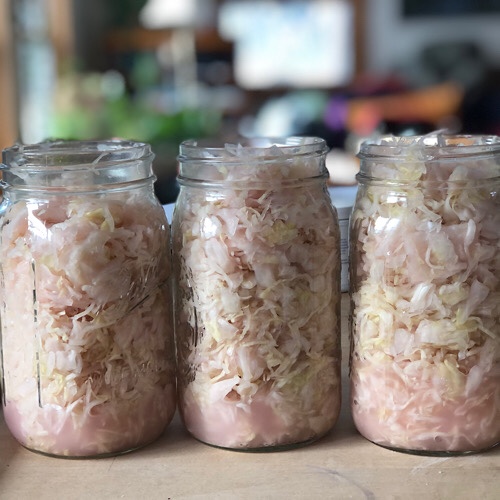
Sam tried making tempeh at home with some purchased starter. Looks pretty good!

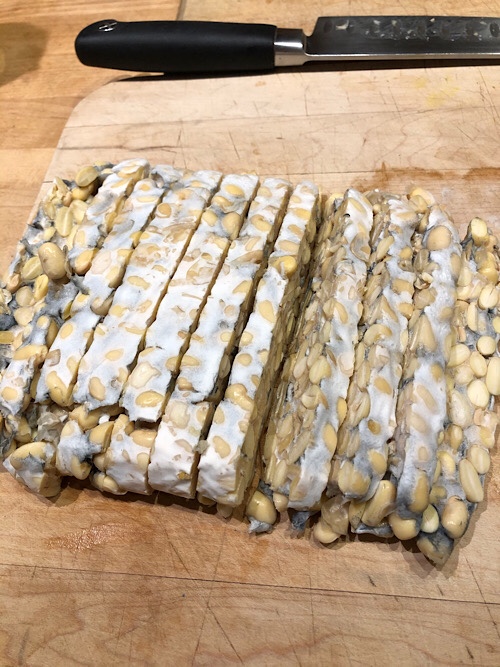
The black areas are edible, they say. They mean the culture has entered its sporulation phase.
Time to harvest that red cabbage that’s still growing out in the garden.
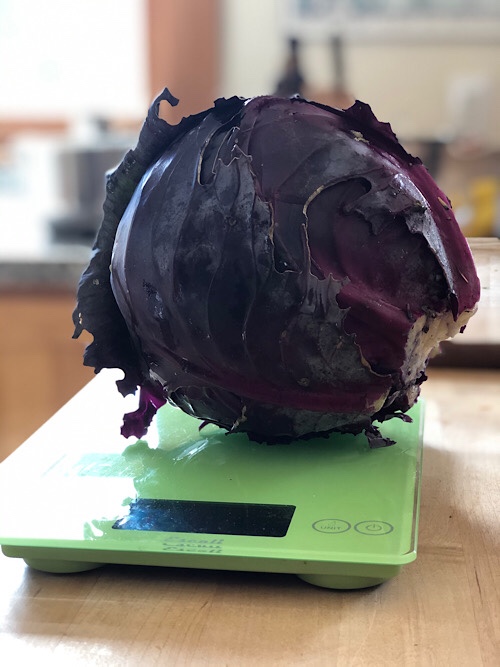
I think it weighed about four pounds? Didn’t make a note of the weight and forgot, of course.
Beautiful red coloration on the outer leaves.
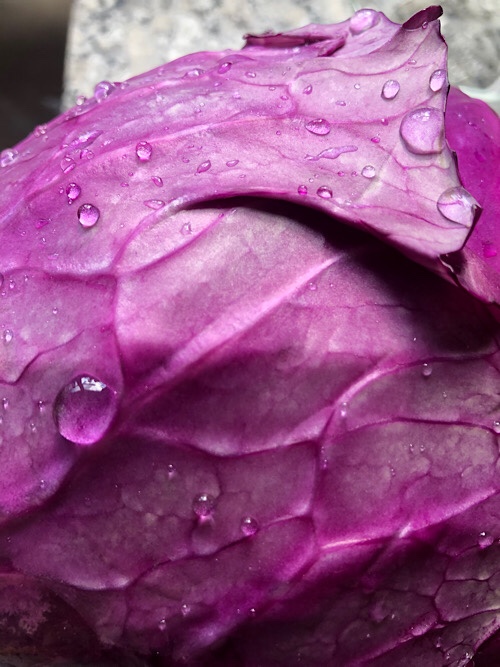
And the interior was just packed with growth and very juicy. Perfect!
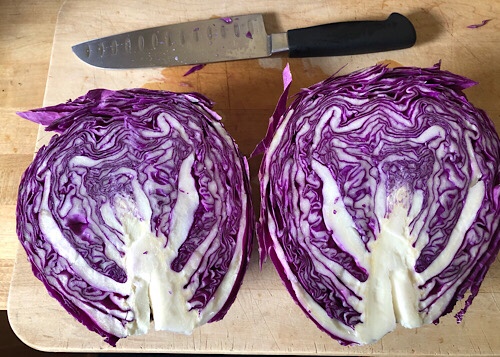
Shredded it all up in the food processor and massaged in salt. Now to ferment. I’ve never made sauerkraut with red cabbage before so we’ll see how we like it.
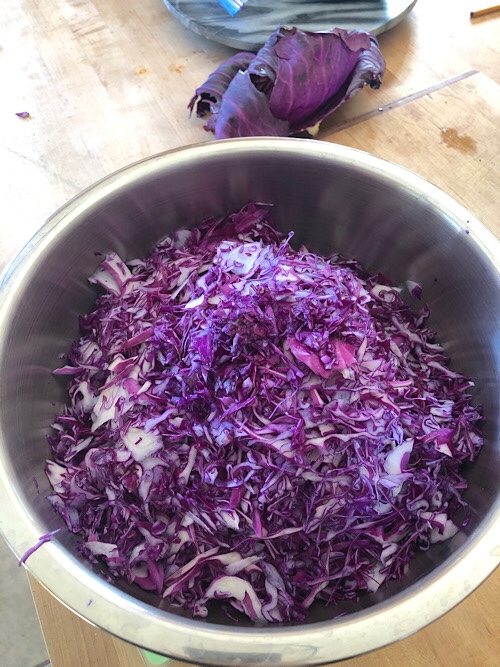
I harvested this massive Farao cabbage. Six pounds! A bit overdone as it was splitting and had some rotten leaves at the base.
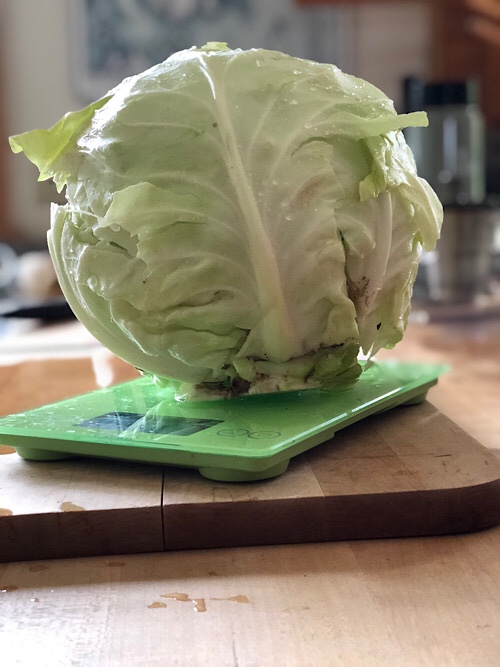
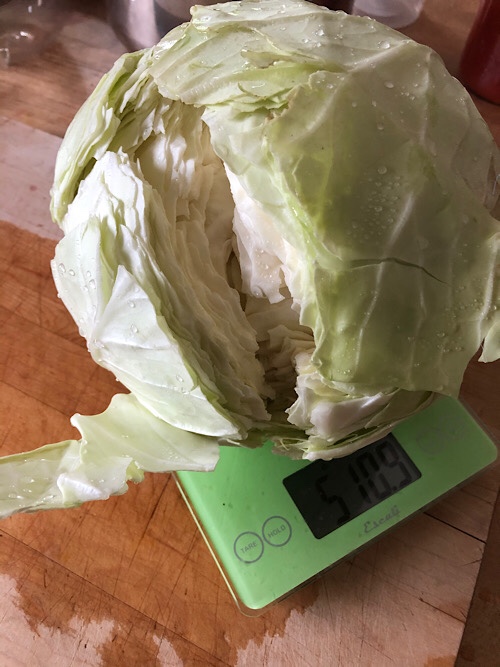


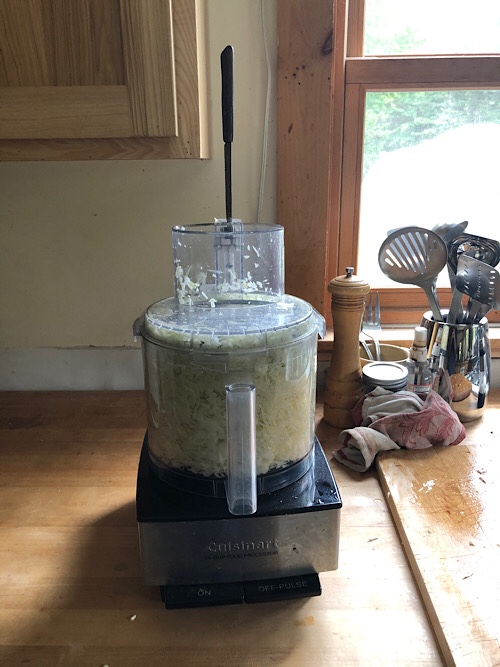
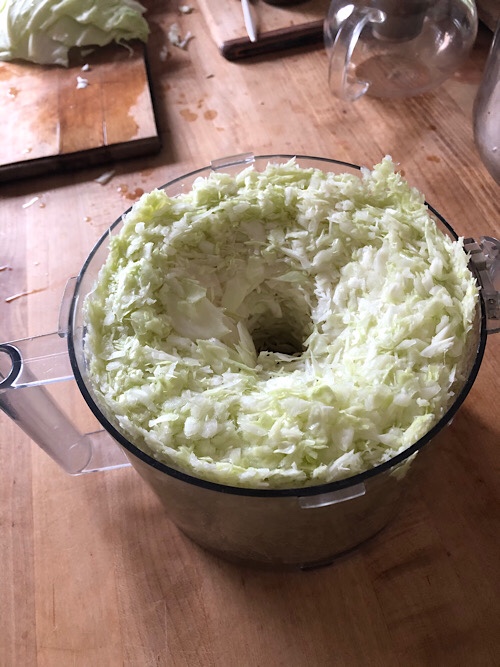

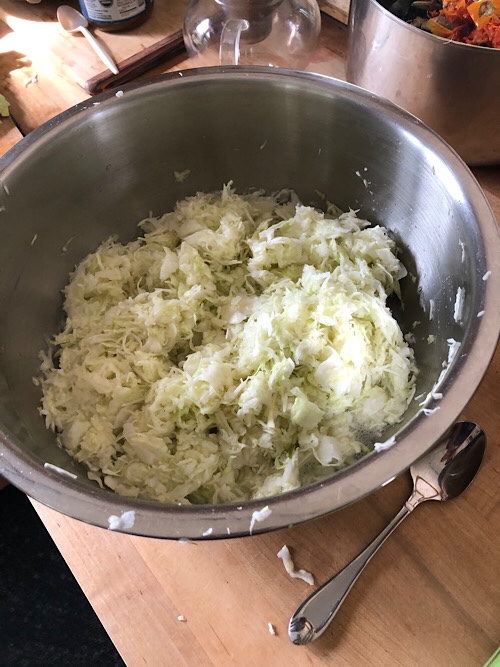
We then place the kraut in a well-cleaned and sanitized crock. A little sauerkraut juice from the previous batch is added as a starter. A few cabbage leaves and weights hold the shreds under the brine for anaerobic fermentation. Lastly the lid is put on and a little water is poured in to the moat.
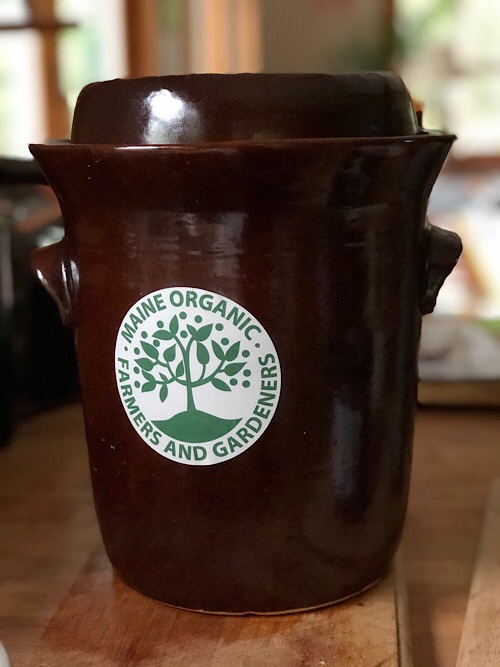
Bubbles started coming up though the moat within a few hours. It’s a very companionable sound.
Updated to show results after about a week of fermentation:
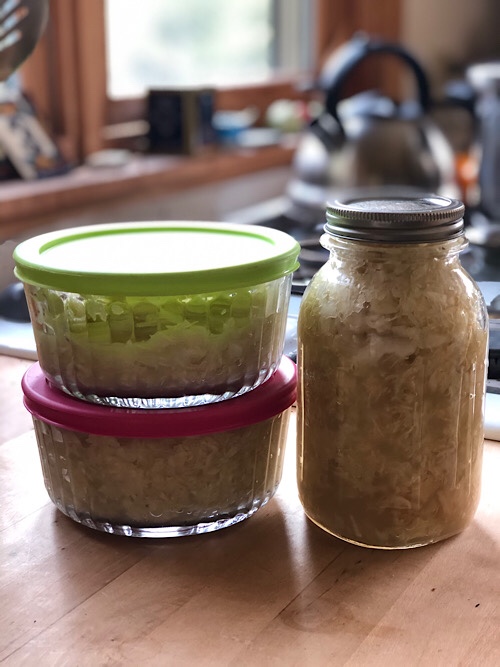
I harvested a cabbage on July 20. Pretty early! This is from a seedling bought from Chuck, variety “Farao.”
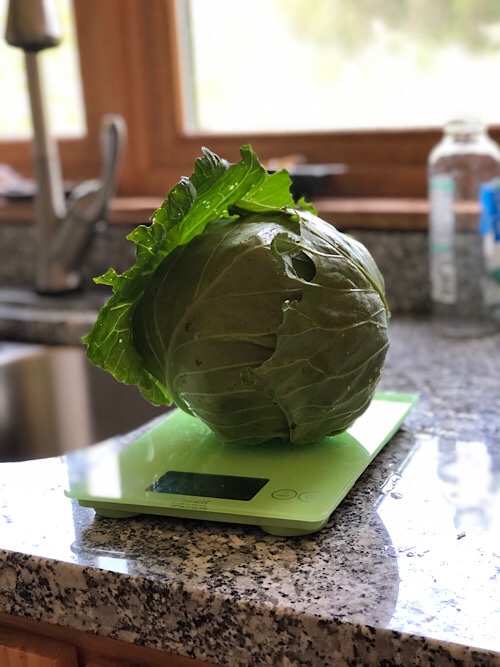
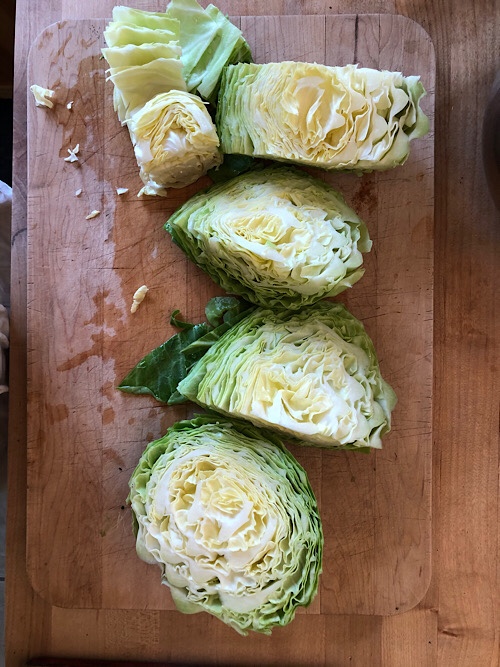
We shred cabbage in the food processor using the 2mm blade. Then weigh in grams, calculating salt as 2 percent of that weight.
Massage in salt, let sit, then load into crock for fermenting. This cabbage will make one quart jar of kraut.